| One of the big claims to fame of the city is that it is the birthplace of Vlad Tepes, sometime around 1431. Indeed, the house he was born in still stands, at Piata Muzeului 6. Today, the building houses a museum and restaurant. | 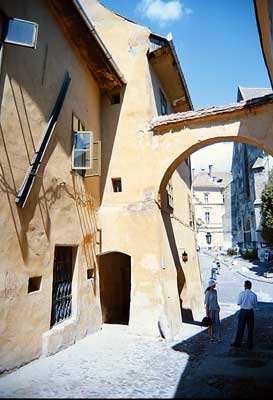 Vlad's birthplace |
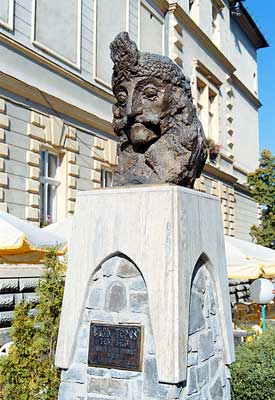 A bust of Vlad Tepes, Sighisoara's favorite impaler |
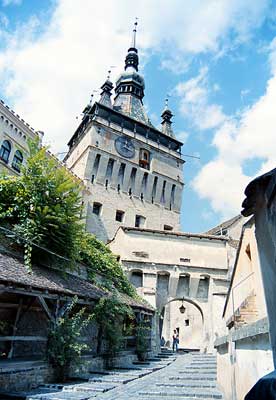 The clock tower |
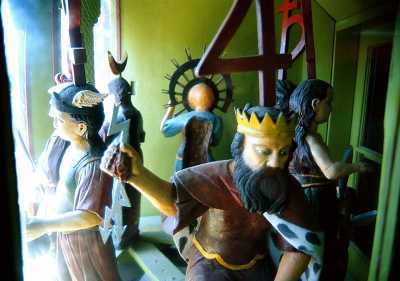 The clock figures denoting days of the week One of the most striking features--literally--of the old town is the imposing 64-meter-tall clock tower, built in the late 13th century. Of course, it originally wasn't much of a clock tower, clocks being unknown in Europe at the time. People used to go about saying, "you know, that tower really needs something, but I just don't know what..." The clock currently in the tower was added in 1648. In addition to doing all the other clock-like things one would expect, this clock also features a day-of-the-week display. Each day, a different wooden figure representing the day of the week rotates out onto a little platform on one side of the tower. |
Up on a hill overlooking the town is the aptly- if unimaginatively-named Church
on the Hill. Hey, it was built in 1345, people weren't as much into snazzy
marketing in those days. To get up there, you must climb the 175 steps of the
Scholars' Stair, a covered wooden stairway built in 1642. We climbed the stairs,
and were all huffing and puffing by the time we got to the top. Lucky thing we
didn't try the 1400 stairs of the castle near Curtea de Arges, we might
still be there. Up on the hill, we spent time wandering around the
mainly German graveyard by the church.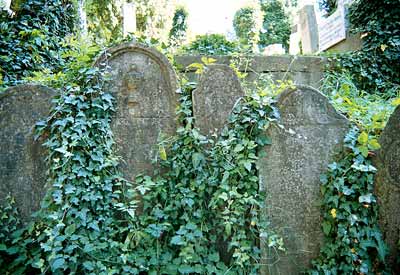 18th century gravestones in the churchyard |
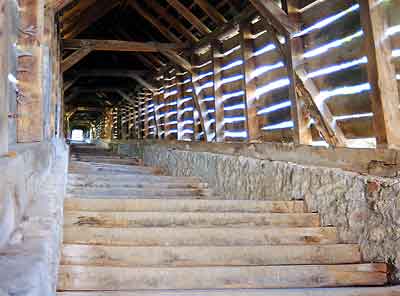 Scholars' Stair. It's a lllooonngg way up... |
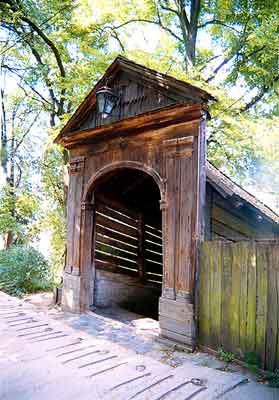 The top of Scholars' Stair |
Scenes around Sighisoara:
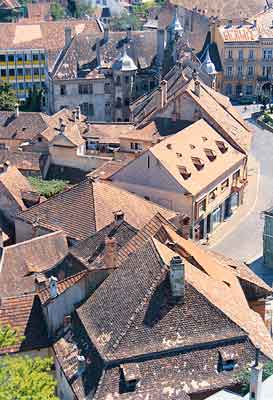 |
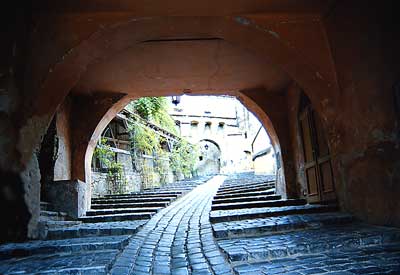 |
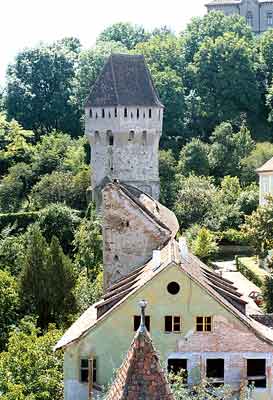 |
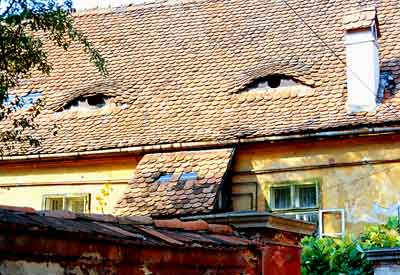 You've heard "the walls have ears?" In Romania, the roofs have eyes |
 |
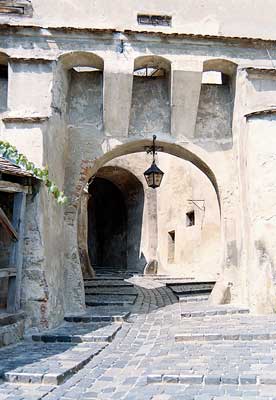 |
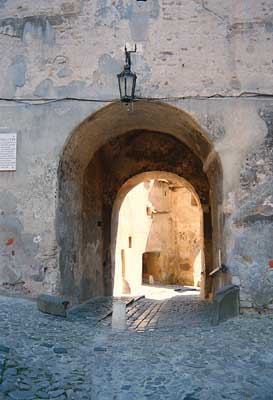 |
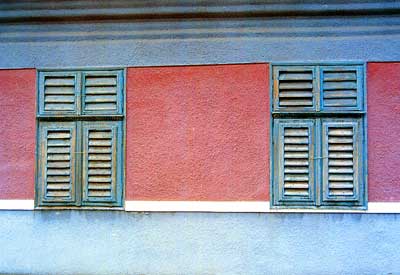 |
 |
PAGE: 1 | 2 | 3 | 4 | 5 | 6 | 7 | 8 | 9 | 10 | 11 | 12 | 13 | 14